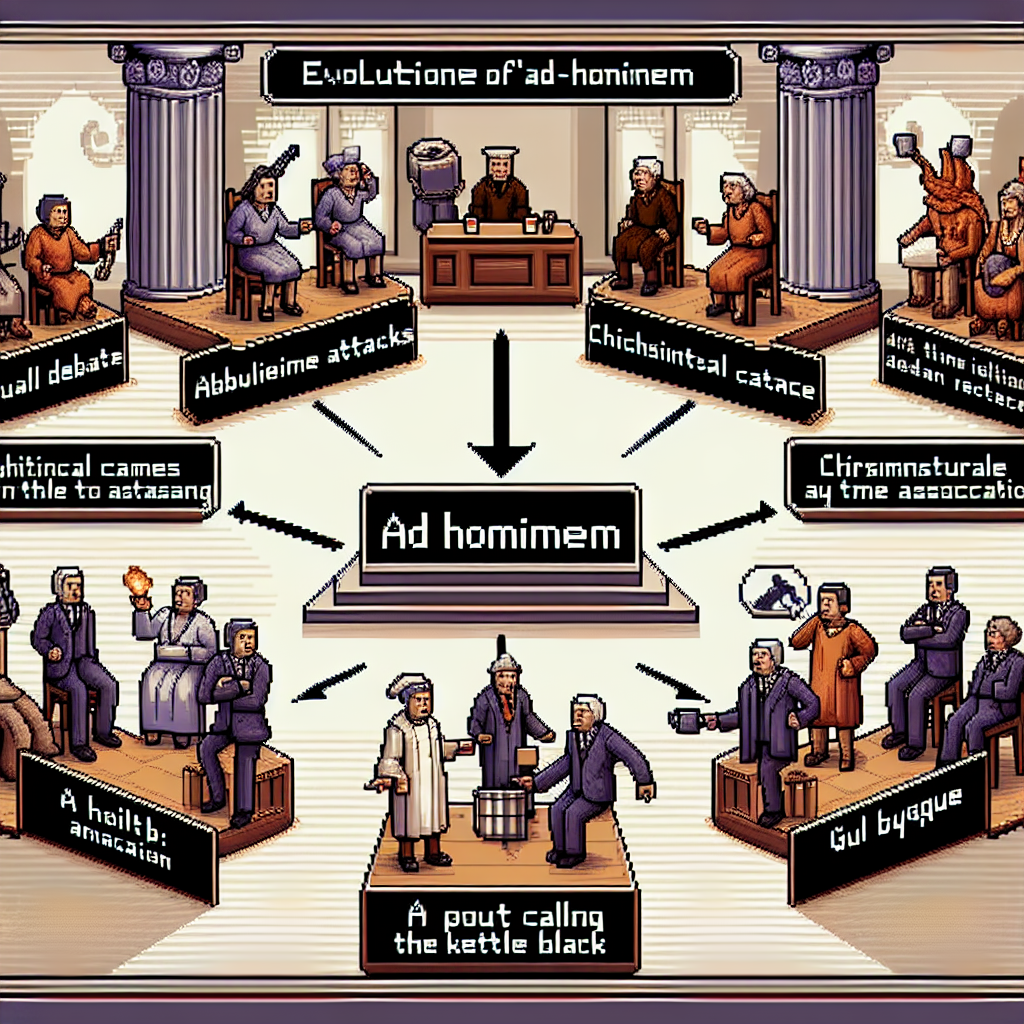Understanding Hasty Generalization in News
Definition of Hasty Generalization
A Hasty Generalization occurs when a conclusion is drawn from insufficient evidence. This logical fallacy is prevalent when broad claims are made without adequate support. Understanding it is crucial for evaluating information critically.
Importance of Understanding Logical Fallacies
The awareness of logical fallacies is vital because they often lead to misleading conclusions. Recognizing them helps individuals discern valid arguments from flawed ones, fostering more informed decision-making and discussions.
Relevance in News and Media
In the realm of news and media, where information is often consumed rapidly, identifying Hasty Generalization becomes particularly relevant. Due to the speed of dissemination, errors in reasoning can spread widely, impacting public opinion and belief. Moreover, news consumers must critically assess reports, especially during breaking news events, ensuring assumptions are scrutinized and evidence is robust.
Characteristics of Hasty Generalization
Identifying Key Features
To effectively understand Hasty Generalization, it is crucial to identify its key features. This logical fallacy often presents itself in situations where conclusions are drawn based on insufficient evidence. Additionally, it involves making broad claims without considering all relevant factors.
Common Examples in News Reporting
In news reporting, Hasty Generalization can manifest when journalists make sweeping statements from limited information. For example, during election coverage, assuming national trends from results in a few states can be misleading. Such errors can occur despite reporters striving for accuracy because of pressing deadlines.
Differences from Other Logical Fallacies
Although Hasty Generalization shares similarities with other logical fallacies, it is distinct because it specifically focuses on overgeneralizing based on small samples. Unlike false dichotomies that split issues into two, it broadens conclusions prematurely. Therefore, recognizing these differences is vital for critical consumption of news.
Hasty Generalization in Historical Contexts
Notable Case Studies
Throughout history, there have been numerous instances where Hasty Generalization has significantly altered public perception. These cases often stem from initial news stories that lacked thorough investigation. In the past, news outlets have rushed to publish sensational stories without adequate evidence, leading to widespread misinformation.
Impact on Public Opinion
As a result, the public opinion was shaped by incomplete facts or misleading headlines. Over time, these hastily drawn conclusions have influenced societal beliefs. In some situations, such misjudgments have reinforced harmful stereotypes.
Lessons Learned
However, journalists have learned invaluable lessons from these instances. Avoiding Hasty Generalization demands diligence. Journalsists must prioritize accuracy over speed. During fast-paced reporting, additional verification efforts are essential. By doing so, media can restore trust with their audience.
Hasty Generalization: Causes in News
Role of Cognitive Biases
Cognitive biases often contribute to the formation of a Hasty Generalization within the realm of news reporting. These biases lead journalists to draw conclusions quickly based on limited information. Additionally, confirmation bias might encourage reporters to seek data that aligns with pre-existing beliefs, complicating impartial reporting.
Pressure for Quick Reporting
Moreover, the relentless demand for immediate news can spur journalists to hastily generalize, striving to deliver breaking stories with rapid speed. During this race against time, vital details may be overlooked, which can compromise accuracy and depth because careful research is often eclipsed by the need for speed.
Influence of Stereotypes
Stereotypes also play a significant role in leading to Hasty Generalizations. They can skew a journalist’s perspective, influencing how certain groups are portrayed. Despite efforts to remain objective, ingrained societal stereotypes might reflect in reporting, ultimately shaping public opinion negatively.
Implications and Consequences of Hasty Generalization in News
Effects on Audience Trust
The tendency to engage in hasty generalization can significantly erode audience trust. When media outlets make generalized claims without substantial evidence, they risk losing credibility among their readers. Additionally, once trust is compromised, it can be challenging to rebuild. Over time, sceptical audiences may turn to alternative sources for information.
Influence on Policy and Decision Making
Moreover, hasty generalization in news reporting can have a detrimental influence on policy and decision making. Policy makers, relying on media reports to gauge public sentiment, might implement measures based on incomplete or skewed data. Consequently, this can lead to misguided decisions that fail to address the core issues.
Long-term Impact on Media Credibility
Ultimately, the chronic use of hasty generalization in news reports threatens the long-term credibility of media organizations. Maintaining high standards of accuracy and thoroughness is essential in preserving their role as a reliable information source, especially during an era of widespread misinformation.
Combating Hasty Generalization in News
Strategies for Journalists and News Organizations
To effectively address Hasty Generalization, journalists must prioritize thorough research before publishing any news story. This includes diverse data collection and consultation with experts to ensure robust evidence supports claims. Additionally, incorporating a standard checklist for fact-checking can significantly improve reporting accuracy.
Promoting Critical Thinking Among Readers
Readers should be encouraged to develop critical thinking skills by questioning the validity of information and looking for corroborating sources. Media literacy programs can play a crucial role in this educational process, making audiences more discerning regarding the news they consume.
Tools and Resources for Accurate Reporting
Journalists must utilize tools like data analytics and verification software to ensure information accuracy. These resources, combined with a commitment to factual integrity, can help minimize the prevalence of Hasty Generalization in news stories. Despite the fast-paced nature of news, prioritizing these strategies helps uphold media credibility.
Combating Hasty Generalization in News: A Case Study
Background
In a well-publicized incident, a major news outlet quickly reported a story about a local community event that resulted in a public misunderstanding. The report was based on minimal information, leading to a Hasty Generalization that painted the entire event in a negative light.
Analysis
This Hasty Generalization stemmed from pressure to release news rapidly, despite the clear lack of evidence. Additionally, cognitive biases played a role, as the journalist assumed past events predicted current outcomes.
Solution
To prevent similar occurrences, the news outlet implemented a series of checks, including mandatory confirmation from multiple sources before publication. Moreover, they began training sessions focused on critical thinking for their team. During these sessions, journalists learned to recognize and avoid biases.
Outcome
Consequently, the outlet noticed a significant increase in audience trust, enhancing their credibility. Now, their reporting is not only rapid but also accurate, ensuring that readers receive unbiased and comprehensive information.


